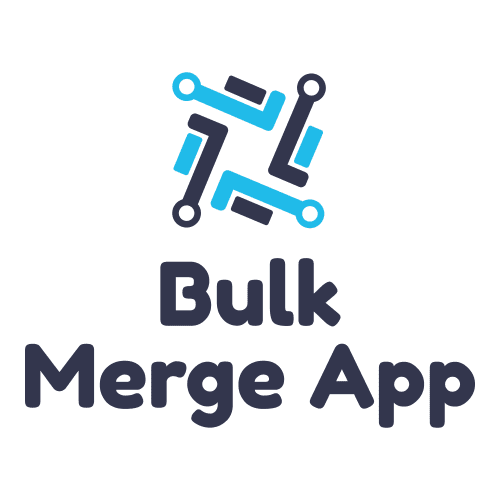Mastering Success: Crafting an Effective Marketing Automation Strategy

For tech-minded marketers today, marketing automation strategies are a pivotal step to drive high-value leads into the sales funnel. A marketing automation strategy can be the key to boosting your company’s growth. With automated marketing methods, you can drive your company’s overall lead generation, quality of leads, and, ultimately, sales and conversions.
Developing a B2B marketing automation strategy, however, requires time and effort. The right tools and techniques make it much easier to bring those desired results to your sales pipeline.
Introduction to Marketing Automation
Marketing automation streamlines processes for teams looking to engage consumers.
What Is Marketing Automation?
Marketing automation is the umbrella term for a wide array of technologies and software tools that help businesses streamline and automate repetitive marketing tasks. In most marketing environments, managers can automate just about any marketing process.
For example, many firms automate standard marketing activities like scheduled social media posts, email blasts, advertising campaigns, and other activities. These regular automation practices help identify prospects,nurture leads, and convert prospects into customers.
In a nutshell, marketing automation helps connect marketing and sales actions across multiple marketing channels and coordinate targeted campaigns.
Key marketing automation features include:
- Lead nurturing via email drip campaigns
- Lead scoring and qualification
- Landing page and website tracking
- Integration with CRM software
Benefits of Implementing Marketing Automation
Automated marketing tools make many standard processes quick and efficient, freeing up time for teams to focus on other important and creative tasks. Specifically, marketers often seek to amp up their results while driving down costs where they can.
Some of the benefits of marketing automation include:
- Increase efficiency with the automation of manual tasks
- Reveal what’s working across your marketing channels
- Drive more conversions through nurturing leads
- Improve analytics with more data-driven insights about your buyers
- Boost ROI with automated campaigns
Understanding Your Audience and Goals
Marketing automation usually comes after you know your target audience, your marketing objectives, and why selling to the market is important to the growth of your organization.
The defined target audience is the foundation of any marketing strategy — and you can’t build the house of your automation strategy without it.
Defining Your Target Audience
To define your target audience:
- Gather audience research and buyer personas
- Identify key demographics like job title, industry, and location
- Create detailed buyer personas that map to your products
Setting Clear Goals and Objectives
Next, you can define your goals:
- Align with overall business goals: Raise brand awareness, drive conversions, etc.
- Set specific, measurable goals: Traffic, leads generated, sales cycle
- Identify key performance indicators to track progress: Conversion rate, cost per click (CPC), etc.
Mapping Your Customer Journey
Another tool in your marketing workbox is the customer journey. You can use marketing automation tools to reach them high in the marketing funnel when the prospect is just exploring your website or social media posts. Or zero in on them lower in the funnel when they are most likely to buy.
Identifying Touchpoints
Knowing your points of contact with your target audience helps identify when to implement marketing automation:
- Awareness: Social media, SEM, forums
- Interest: Landing pages, downloads, email
- Evaluation: Product demos, trials, consultations
- Conversion: Email, calls-to-action, sales reps
- Retention: Email, community, loyalty program
Creating Relevant Content for Each Stage
You don’t want to send the same content to a consumer who just saw your site for the first time as someone who follows you on social media and has interacted with your brand before.
Create content for the different stages of your marketing process, including:
- Blog posts and guides to nurture awareness
- Tools, tips, and templates to capture interest
- Product comparisons and ROI calculators for evaluation
Forget the old, manual, repetitive tasks you once used to create and execute digital marketing campaigns.
Today, marketers are moving past email batch and blast, and they’re utilizing multiple channels to engage with customers on a more personal level and generate quality sales leads. With many vendors out in the market, it’s important to choose the right marketing automation platform for your business. For example, Astreca makes it easy to automate your marketing.
Making the right choice can help your marketing and sales team find prospects, engage them in your marketing activities, and drive conversions and sales.
Key Features To Look For
When searching for a marketing automation platform, make sure it has:
- Lead management and nurturing functionality
- CRM and channel integration capabilities
- Campaign creation and management tools
In addition to key features, you’ll also want to consider any necessary integrations:
- Identify essential needs for your CRM integration
- Consider plug-ins and connectors for channels like email, social, and advertising
- Understand if the integrations will be seamless or require customization
Creating Personalized Campaigns
Marketing automation can help streamline and personalize a company’s marketing efforts. For example, when a person fills out a form to download a whitepaper or other free material, marketing automation automatically adds that sales prospect to an email campaign to receive follow-up emails with related content.
When you combine an email marketing automation strategy with a CRM that houses customer data, you gain the ability to automate and customize campaigns for a much richer 1:1 experience. In this manner, it’s a better overall customer experience and helps to drive better engagement and ROI.
Segmentation Strategies
When creating a personalized campaign, implement segmentation strategies with factors like:
- Demographic data like industry, seniority, and geographic location
- Engagement data such as email opens, downloads, and page views
- Behavioral data, including past purchases and activity
Dynamic Content Creation
You’re not limited to dull, generic emails and other content. Consider ways you can spark interest with dynamic content:
- Send content specific to a user’s interests based on segments.
- Localize content with relevant data points based on location.
- Personalize content with first name, company name, etc.
Automating Lead Nurturing Processes
Lead nurturing is another benefit of using marketing automation tools. Lead nurturing via email drip campaigns can score leads for your business and automatically deliver the right content to the right prospects at the right time.
Lead Scoring and Qualification
It can be helpful to rank prospects with lead scoring and qualification, so you focus efforts where they’ll be most successful:
- Define criteria like email opens, form fills, and site activity
- Assign point values for actions to score leads
- Automate lead handoff to sales when qualified
Implementing Drip Campaigns
Send a slow series of emails to keep prospective customers interested:
- Tailor content by lead score or progression through the sales funnel.
- Set send schedules and triggers to deploy at certain actions.
- Schedule times between emails.
Measuring and Analyzing Results
Marketing automation tools will continuously analyze your campaign’s performance and refine your automation strategy over time.
Key Metrics to Track
Key metrics will help you identify what’s most effective and where you should tailor your approach:
- Email open, clickthrough, and conversion rates
- Lead scoring velocity and sales qualification rates
- Sales cycle length, deal size, and pipeline progress
Iterating and Optimizing Your Strategy
As you push content, you can continue to refine it over time so it’s most effective.
- A/B test email content, offers, and scheduling
- Monitor analytics to identify high-performing campaigns
- Remove or re-work underperforming elements
- Use insights to refine automation continuously
Ensuring Compliance and Data Security
Compliance and data security are crucial areas for any business. Your marketing automation platform can help ensure you have appropriate security and compliance practices in place.
Understanding Data Privacy Regulations
Meeting data privacy regulations is a non-negotiable, as it can lead to legal trouble if you don’t meet them:
- Keep up-to-date with regulations like GDPR and CCPA
- Audit data collection practices and compliance processes
- Clearly communicate privacy policies and consent requirements
- Allow subscribers visibility into data held and options to access or delete
Implementing Secure Practices
In addition to following any regulations, it’s good practice to implement security across all areas:
- Protect subscriber data with encryption in motion and at rest
- Establish stringent controls and access restrictions
- Follow secure development practices for any custom integrations
- Conduct regular audits and threat modeling
- Create incident response plans for potential data breaches
Conclusion: Empowering Your Marketing with Automation
Developing a smart marketing automation strategy can drive significant efficiency and ROI for your business. If you need help identifying your audience and executing personalized campaigns, reach out to Astreca.Astreca develops solutions and services to support businesses using Hubspot or Salesforce for sales and marketing automation.
Get started on your marketing automation journey and watch your business grow today!
#AutomationStrategy #DataAnalytics #DigitalMarketing #EmailMarketing #LeadGeneration #MarketingAutomation #Personalization






